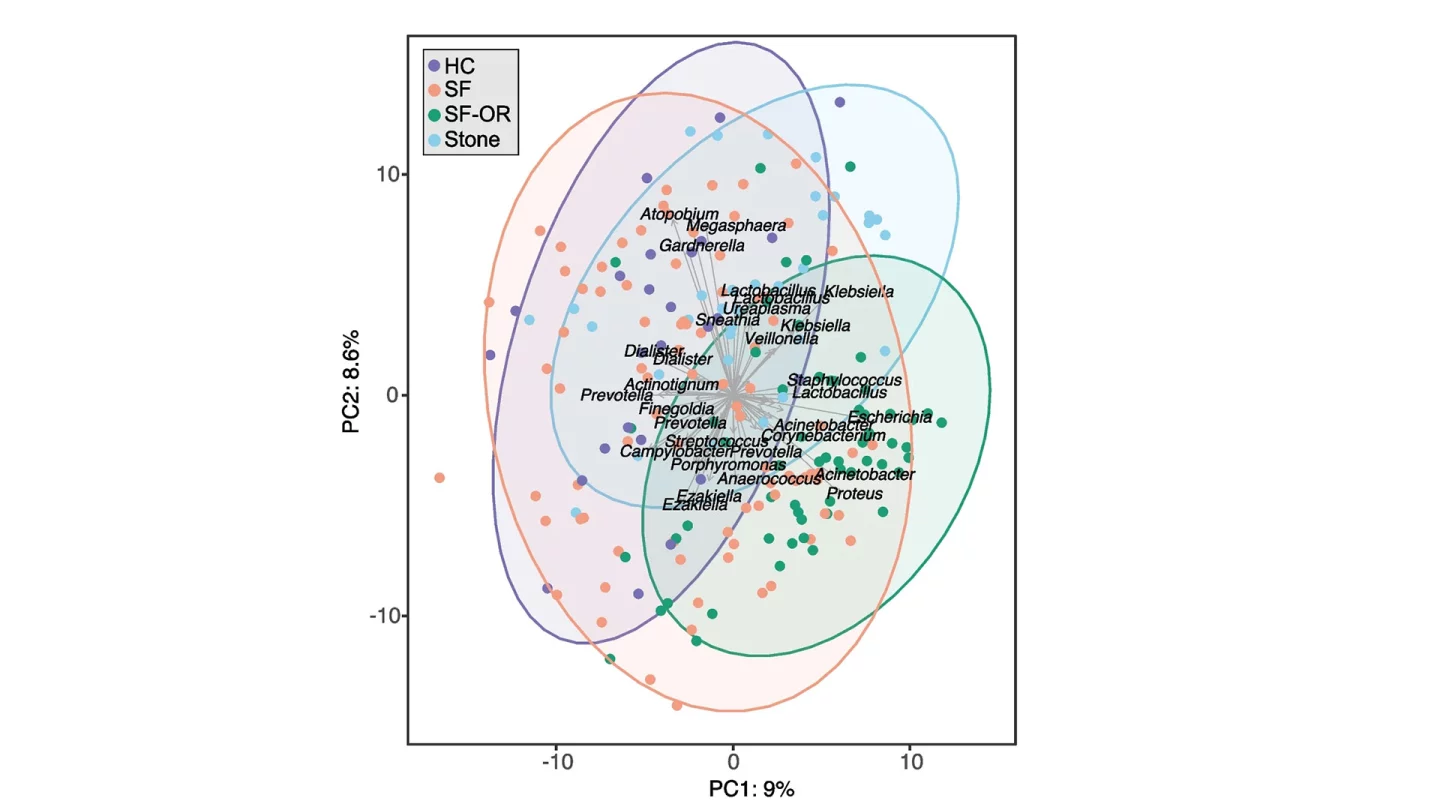The human body's microbe makeup is increasingly linked to the onset of many diseases, with a lot of the focus on the gut. A new study, however, has found that changes in the bug populations in not just the gut but in salivary and urinary microbiomes are linked to kidney stones forming.
“Kidney stone disease has been rising in recent years, affecting roughly 10% of people,” says Jeremy Burton, from St. Joseph’s Health Care London. “While previous research has shown a connection between the gut microbiome and kidney stones in those who have taken antibiotics, we also wanted to explore the connection to other microbiomes in the hopes we can advance understanding and potential treatments.”
Using a specific genetic analysis technique, researchers from Lawson Health Research Institute and Western University scientists examined the microbe makeup of the three regions in 83 patients who had kidney stones, as well as those of 30 healthy people. What they found was that those with kidney stones had changes in not one but all three microbiomes. The patients with the formed kidney stones also had at least 90 days since taking antibiotics – which has previously been linked to stone prevalence.
“Our testing – called shotgun metagenomic sequencing – allowed us to discover which bacteria were present in the gut and the genetic capabilities of those bacteria, or how it functions," said lead author Kait Al, of Western University’s Schulich School of Medicine & Dentistry. "We also did a simpler sequencing of the oral and urinary samples."
Kidney stones are most often crystalline calcium oxalate deposits, and it was earlier thought to be specific microbes such as the bacterium Oxalobacter formigenes that could breakdown these toxic waste deposits, but the researchers found that there's a much more widespread group of beneficial bugs that can also prevent the buildup of calcium oxalate.
“It’s a more complex story," said Al. "The microbes form a kind of network that’s stable and beneficial in healthy people, but in those with kidney stones, that network is broken down. They’re not producing the same vitamins and useful metabolites, not just in the gut but also in the urinary tract and oral cavity."

The cohort with formed kidney stones had at some point been exposed to antimicrobials such as antibiotics, antivirals and antifungals, as they had more antibiotic-resistant genes.
“We found not only that those who got kidney stones had an unhealthy microbiome, including a gut microbiome that was more likely to excrete toxins to the kidneys, but also that they were antibiotic resistant,” explained Burton, also an associate professor in the Department of Microbiology and Immunology at Schulich Medicine & Dentistry.
The best way to maintain a healthy oral, urinary and gut microbiome is to eat a balanced diet with plenty of prebiotic and probiotic food that makes all three regions happy (for example, yogurt and fermented foods for your gut, nitrogen-rich high-fiber vegetables like chard and celery for your mouth). And keep antimicrobial use to a minimum if possible.
Kidney stone disease was once thought to be something linked to obesity and aging, but more younger women and children have been diagnosed in recent decades.
While more research is needed, such as seeing how specific diets affected each microbiome and the body's ability to break down calcium oxalate. But the scientists argue that their findings show that multi-site microbe health is more important for preventing kidney stone disease than focusing on intestinal O. formigenes colonies.
The study was published in the journal Microbiome.
Source: Lawson Health Research Institute






